激光3D扫描技术
激光 3D 扫描是一项先进技术,可以创建物体和环境的高精度3D模型。在本文中,我们将解释激光3D扫描的原理、市场上现有的不同类型激光扫描仪、它们的应用场景以及带来的优势。
在如今的数字化时代,物理物品转换为数字模型的方式多种多样,无论是通过使用 3D 扫描仪、相机和摄影测量软件,还是内置 LiDAR 传感器的智能手机,产品琳琅满目,但选择合适的工具往往让人感到困惑。本文将深入解析激光 3D 扫描技术——目前应用最广泛的扫描技术之一。
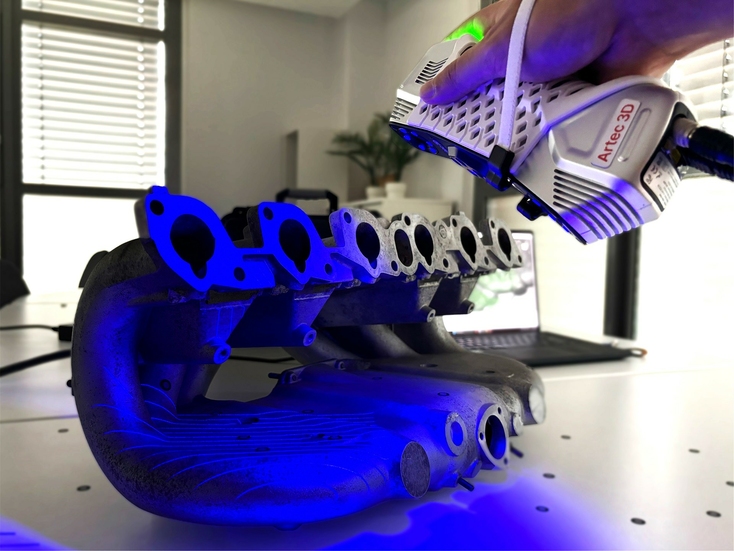
什么是激光 3D 扫描?
简单来说,激光 3D 扫描是通过激光作为光源,捕捉物体或环境精确3D信息的过程。这项技术依靠激光束测量物体表面到扫描仪的距离,从而创建出极其逼真的3D模型,适用于物体、场地或景观的建模。激光 3D 扫描技术在工程、建筑等领域得到广泛应用,特别适合记录保存结构现状。
3D激光扫描仪通过LiDAR(光探测与测距)技术,将激光束投射到物体上,记录并测量物体的精确位置和距离。扫描仪生成的点云文件为许多应用提供了宝贵的数字数据,从逆向工程、质量检验,到文物保护和司法鉴定等。现代激光扫描仪便携、安全、易于操作,且精度可达到毫米级,这也是其广泛受欢迎的原因之一。
激光3D扫描工作原理
激光扫描仪的工作原理是通过高速发射激光脉冲,激光束会从物体表面反射回扫描仪传感器(LiDAR)。对于每一个脉冲,扫描仪通过计算发射与接收脉冲之间的时间差,来测量扫描仪与物体之间的距离。每个数据点都会被转换成具有 x、y、z 坐标的数字,表示其在 3D 空间中的精确位置。

LiDAR 扫描仪的工作流程可以分为以下几个步骤:
激光发射:扫描仪将激光束投射到物体上,通常以快速、短促的脉冲形式发射,激光波长位于红外光谱范围内,人眼无法看到。
脉冲反射:激光脉冲打到物体后,会反射回来并被扫描仪接收。物体表面的特性,比如颜色、纹理和反射率,会影响激光束反射回来的方式。
飞行时间测量:扫描仪通过测量每个脉冲从设备到物体再返回所需的时间,利用光速计算得出距离。
点云创建:通过计算物体表面多个点的距离,扫描仪生成一个密集的数据点集合,称为点云。每个点都代表空间中的一个 3D 位置。
数据处理:点云数据经过处理后,生成详细的 3D 模型或地图,每个点都是扫描环境的精确反映。之后,这些数据可以用来进行可视化、分析,并生成水密3D 模型。
关键点
激光3D扫描的工作原理是通过将激光束投射到物体上,测量反射回来的光线,从而确定物体的形状和尺寸。收集到的数据会形成一个详细的点云,随后通过处理转换为 3D 模型,用于分析和各种应用。
激光3D扫描仪的类型
3D激光扫描仪有多种不同类型,能够满足各种应用需求。激光扫描仪有多种类型,从手持式、固定式或三脚架安装式的简单设备,到移动激光扫描系统、机载激光扫描系统甚至机器人臂等复杂的行业级解决方案。激光扫描仪主要采用三种技术:飞行时间法、相位偏移法和三角测量法。接下来,我们将详细介绍每种技术的原理。
飞行时间系统(或脉冲测量系统)通过发射单个激光脉冲并测量激光反射回扫描仪传感器所需的时间来确定到终点的距离。
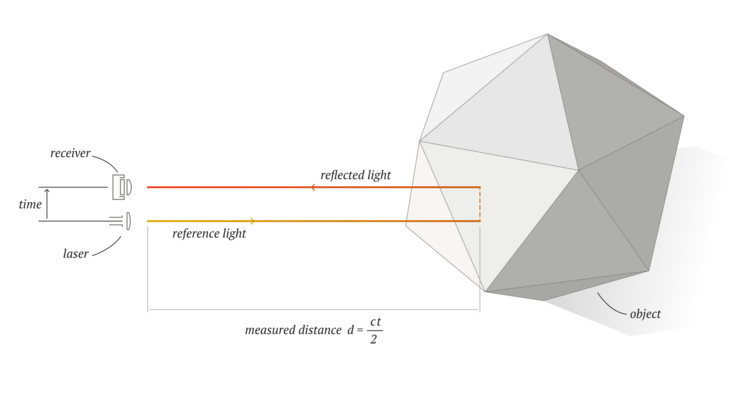
相位移系统也使用发射的激光束,但光强度通过特定的波形进行调制。强度模式的反射会因物体表面撞击而发生位移。通过测量发出和接收到的激光信号间的位移,可以确保计算得出精确的距离。
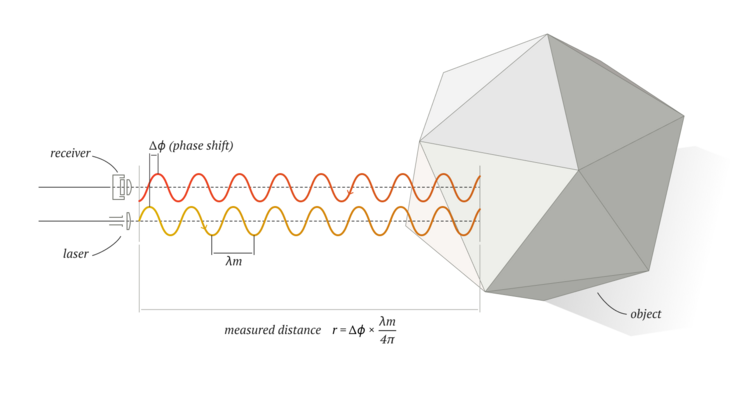
基于三角测量的激光扫描仪将激光束投射到物体上,并通过机载相机传感器捕捉反射光。系统使用三角函数三角测量法来计算到物体的距离,形成激光源、传感器和物体表面反射目标之间的三角形。三角测量扫描仪通常用于短距离应用(5米以内),非常适合捕获1厘米到2-3米的中小型物体。
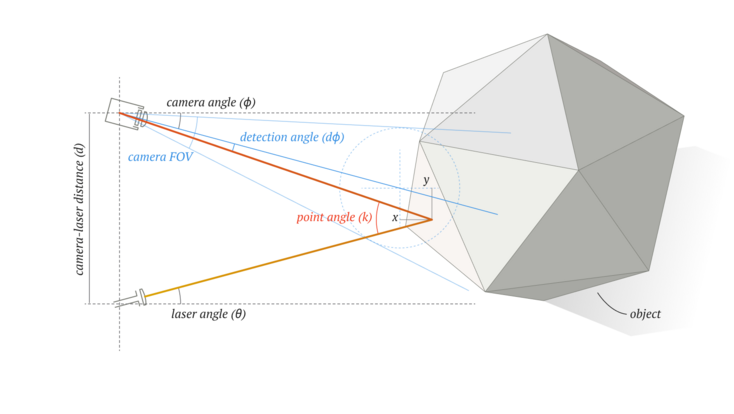
Artec Point和Artec Ray II是两款十分优秀的扫描仪,可用于捕获不同种类的物体,能在不同距离下操作。Artec Point是一款计量级手持激光3D扫描仪,轻松实现高达0.02毫米的精度效果;Artec Ray II则是一款远距LiDAR扫描仪,在10米距离处可实现优秀的1.9毫米3D点位精度。
关键点
激光3D扫描仪采用飞行时间、相位移或三角测量其中一种测量技术。飞行时间扫描仪通过计算激光脉冲反射回扫描仪所需的时间来测量距离;相位移设备通过比较调制光波模式来测量距离;三角测量扫描仪,适用于短距离测量,通过形成激光源、物体和传感器之间的三角形,利用三角函数计算距离,非常适合捕获中小型物体。
Artec Point是一款便携式3D激光扫描仪,专门用于快速精准的物体与环境扫描。它是Artec首款基于靶标定位的扫描设备,能够以超高精度和可重复性捕捉三维数据,成为工业、工程和设计领域不可或缺的工具。该扫描仪拥有高达0.02毫米的极致精度与分辨率,其快速扫描性能可实现每秒280万次测量,确保数据采集高效迅捷。即便是黑色或反光表面等复杂材质,Artec Point亦能精准呈现。用户可自由选择网格、平行和单激光模式优化扫描效果,并借助大倾角固定高清摄像头,轻松应对狭窄空间的扫描挑战。
而Artec Ray II则专为工业与建筑领域的大规模高精度扫描任务而打造。依托先进的激光技术,Artec Ray II凭借其超凡的精度,成为远距离精确捕捉巨型物体的理想之选。无论是风力发电机、船舶螺旋桨、大型工艺品,还是桥梁、工厂车间、法医现场或考古遗址,它都能轻松应对。在逆向工程、质量检测、犯罪现场取证或土木基础设施的时序变化评估等场景中,Artec Ray II凭借卓越的三维点位精度和业界领先的测角精度而脱颖而出。
激光 3D 扫描的应用
激光扫描技术凭借其无与伦比的精度、速度和多功能性,已经改变了多个行业,特别是在详细空间数据采集方面。它在建筑施工、建筑设计、文化遗产保护以及制造业等多个领域发挥着至关重要的作用。通过捕捉高度准确的3D数据,激光3D扫描帮助不同领域的专业人士提升工作流程,减少设计冲突,并确保制造、翻新、维护和研究工作的数字准确度。激光扫描技术凭借超详细数字模型的生成能力,能够实现智能规划、增强协作并降低风险,从而成为众多项目中不可或缺的关键工具。
激光扫描的主要应用如下:
逆向工程
激光3D扫描在逆向工程中发挥着关键作用,通过捕获物体几何,可以对其进行复制或修改。例如,当某家公司需要为机器或车辆生产特殊零件或已停产的零件时,激光扫描技术能够生成高精度的3D模型。这些模型可用于制造公差要求严格的替换零件,从而减少误差、避免手动测量,确保最终产品完美匹配。
例如,一家荷兰高速艇制造商为满足重型专业用途的需求,重新设计了手工打造的船只。团队对三艘大型船只进行了扫描,创建了精确的3D模型用于逆向工程,从而推动了专业船只的建造,并确保精度极高。
质量检验
激光扫描在质量控制和检测工作流程中具有无可估量的价值。例如,它通常用于桥梁和防洪墙的检测,通过生成高分辨率的点云数据来评估结构完整性、对齐情况和表面状况。这些数据帮助工程师识别并监测随时间推移产生的变形,确保符合设计规范,从而提升安全性并优化维护计划。
在GoMeasure3D的一个项目中,他们找到了一种可量化的方法来检查一座3.28英里的防洪墙损坏情况,该防洪墙位于一座车水马龙的立交桥下。通过使用Artec Ray II精确捕捉这一庞大结构的一部分,工程师们获得了高精度的细节数据,非常适合检测变形、测量腐蚀程度以及评估维护需求。
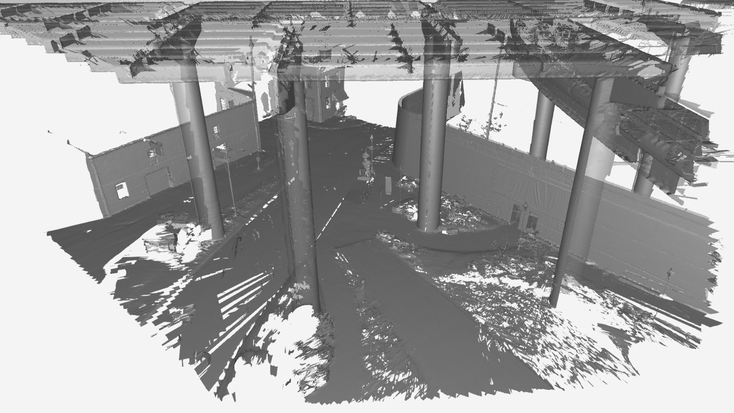
建筑施工
在记录设施的竣工状态及其随时间变化的过程中,激光扫描技术发挥着关键作用。它能够捕捉建筑、结构以及机电(机械、电气、管道)元素等最复杂的细节。例如,在设施翻新时,3D激光扫描可以提供关于当前结构框架、设备和管道的精确数据。这些数据使工程师和建筑师能够无缝整合新设计,避免现有结构不匹配建议的升级方案。该技术可生成2-4毫米精度的点云数据,使翻新工程能够满足精确的规格要求,并在早期阶段识别潜在问题,从而加快项目执行速度。
建筑设计
3D激光扫描技术通过提供建筑物每个元素的精确3D空间信息,简化了建筑设计流程。在重新设计设施时,激光扫描可用于创建包含所有可见特征(墙壁、窗户、暖通空调系统)的精确3D空间模型。借助这些数据,建筑师可以轻松获取所有必要的测量信息。此外,3D 扫描提供的细节足以验证所有部分是否符合设计方案。
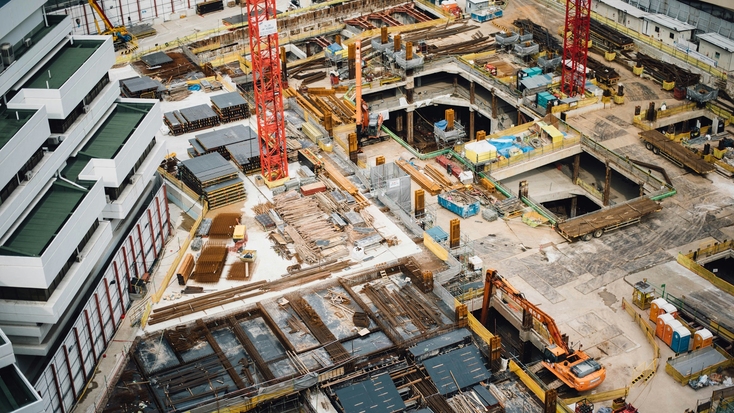
文化遗产保护
文化遗产保护专家将激光3D扫描视作一种非侵入性的高精度方法,用于记录和保护文化地标。无论是保护古建筑、纪念碑还是考古遗址,激光扫描都能捕捉每个物体的精细细节,创建用于修复、保护和虚拟现实导览的数字孪生模型。这不仅有助于保护历史和文化,还能让后代详细探索并研究这些珍贵遗产。
例如,荷兰的Hagha教堂在翻修过程中,工人们发现教堂腐烂的木地板下藏有墓碑。尽管更换地板以加固建筑是项目的主要目标,但团队考虑需要让新发现的遗迹公之于众。于是,他们使用远距3D激光扫描仪扫描整个教堂(包括其隐藏的珍宝)完成了这一心愿。
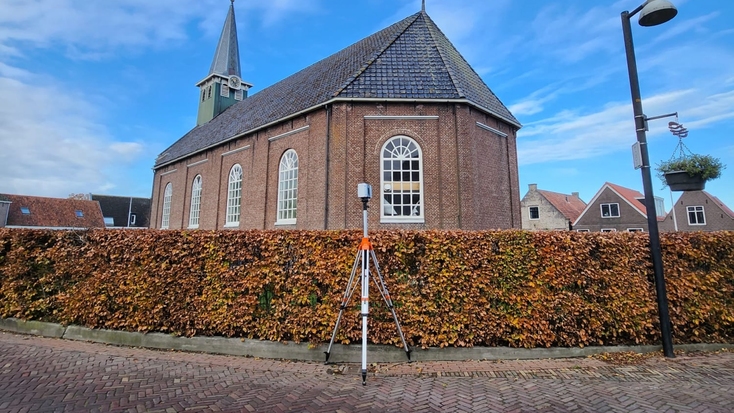
发电厂维护与改造
在发电厂改造中,准确记录现有基础设施(如锅炉、涡轮机和管道)至关重要,而3D激光扫描在这方面发挥了重要作用。例如,在更新老化的发电厂以满足新环境标准时,激光技术可以创建发电厂基础设施的全方位3D模型。随后,工程师可以利用该模型进行规划和升级,确保新设备能够无缝融入现有布局。此外,虚拟漫游危险区域的功能可以减少安全风险,帮助识别易磨损的组件,从而制定出积极的维修计划,延长关键资产的使用寿命。
制造设施改造
在制造业中,修改或扩建工厂需要精准详细的竣工数据,而3D激光扫描可提供有关设备、结构和工艺的精确信息。例如,当汽车制造厂需要升级装配线时,激光扫描有助于确保新设备能完美适应现有空间。3D数据可用于规划安装,确保所有组件顺利集成,从而减少安装错误或延误带来的高昂成本。
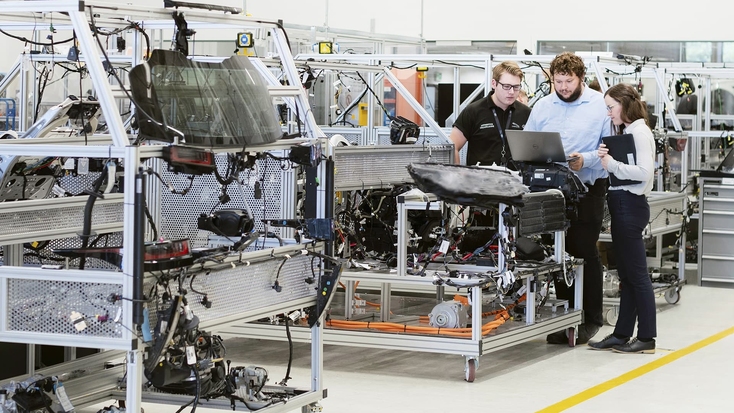
法医学
在法医调查中,当专家需要安全捕获犯罪现场或事故现场的详细数据时,3D激光扫描技术被广泛应用。例如,在交通事故中,激光扫描可以创建事故现场的精确三维模型,包括车辆位置、道路标记以及光线、能见度等环境因素。这些数字化证据随后可用于重建事件,协助法律程序,为事故重建专家提供有价值的细节去了解事件经过。
另一个应用案例是法医人类学。在梅西赫斯特大学,一位知名教授利用3D扫描技术将数百块骨骼数字化,并将其转化为精度达解剖级别的3D模型,为一门创新虚拟现实课程提供支持。
关键点
激光 3D 扫描技术通过提供准确的实时数据,正在革新多个行业,特别是在特定专业任务中。从优化建筑设计到促进工厂改造,再到辅助法医调查,这项技术的应用范围非常广泛,且仍在不断扩展。
激光3D扫描优势
激光3D扫描凭借其捕捉详细、精准3D数据的能力,已成为众多行业中不可或缺的工具。以下是激光3D扫描的一些关键优势。
高精度且可重复
激光扫描提供极其精确的测量数据,非常适合需要计量级数据的应用,如逆向工程、质量检验、建筑施工和制造领域。
快速数据采集
激光扫描仪能够快速收集大量数据,同时保持稳定的追踪能力。与手动测量相比,远距离扫描大面积表面不仅速度更快,而且对于现场工作人员来说更安全。
成本效益高
通过单次扫描快速捕捉数据,激光3D扫描避免了因测量错误导致的昂贵返工和延误成本。这项技术能够无缝集成到CAD和BIM软件中,可节省资源,帮助项目预算按计划进行。
小巧灵活功能多
激光扫描技术适应性极强,能够捕捉大型、复杂或难以触及的物体和区域的数据。无论是在室内、室外,还是在恶劣条件下,都能帮助专业人士应对各种规模的挑战。
优化设计与文档管理
3D 激光扫描生成的点云为打造超逼真的 3D 模型奠定基础,确保设计符合规范并最大限度降低误差风险。优化的文档管理还促进了团队之间更好的协作,使专业人士能够更有效地可视化、规划并监控项目。
激光 3D 扫描的潜在挑战
尽管激光3D扫描技术在各行业中提供了巨大的优势,但仍有一些潜在挑战需要考虑。其中一大问题是成本,因为高质量的激光扫描设备通常需要大量投资。幸运的是,通过选择性价比高的解决方案,仍然可以获得与高端扫描仪相媲美的卓越效果,从而缓解这一问题。
用于处理和分析3D扫描数据的软件,尤其是针对复杂模型的软件,也需要谨慎选择。例如,Artec Studio 19是一款智能且直观的3D扫描和处理软件,拥有多种高级功能,可充分发挥3D扫描仪的潜力。虽然预算有限的小型企业或项目可能会认为维护、培训和许可费用是一笔不小的开支,但产品带来的长期效益,如高质量的3D数据和始终稳定的精确结果,使得这项投资物有所值。
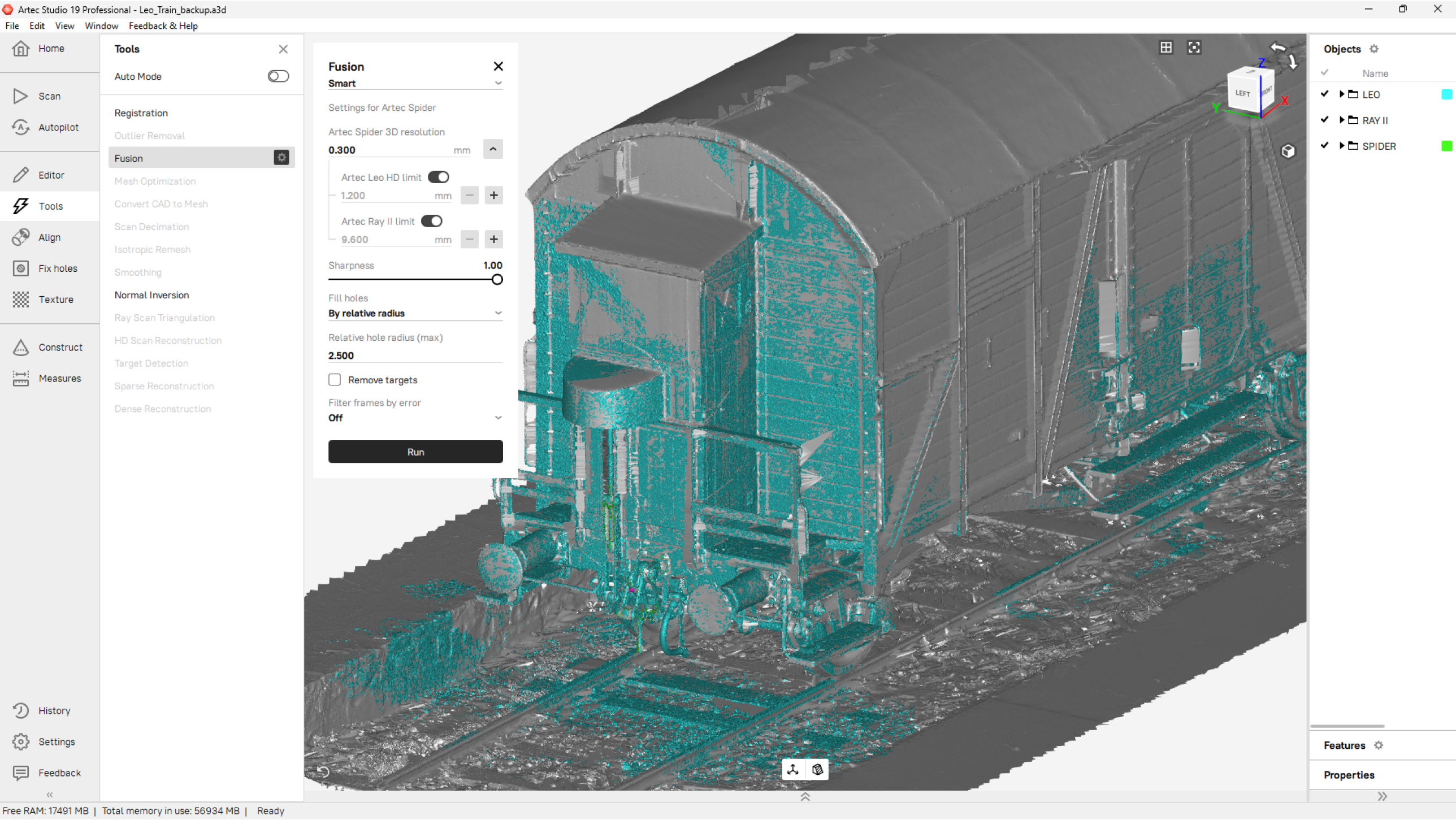
激光扫描的另一个挑战在于管理庞大的数据集。3D扫描仪生成的点云可能包含数百万甚至数十亿个数据点。庞大的文件存储、处理和管理可能会带来困难,通常需要强大的软件和高性能计算系统。处理如此详细的扫描数据,尤其是大型结构或环境的扫描数据,可能会拖慢工作流程,延长项目周期。将原始点云数据转换为可用的输出(如CAD图纸或BIM模型)也可能非常耗时。然而,像Artec Studio 19这样的工具可以简化这一过程:该软件专为处理海量数据集而设计,使3D建模、逆向工程和质量检验等应用更加高效和便捷。
环境条件也需要考虑。扫描的准确度通常会受到光照、表面反射率和材料特性的影响。例如,玻璃或镜子等高反射表面或非常暗的表面可能会使数据采集变得复杂,导致扫描结果不准确,出现数据空白。在这种情况下,选择适合的扫描仪至关重要,尤其需要扫描仪能够在光线不佳或具有挑战性的表面上采集数据。Artec 3D激光扫描仪在这些情况下表现出色,能确保获得高质量的结果。此外,使用Artec激光扫描仪几乎不需要太多培训。无论是硬件还是软件,都非常易于使用,学习曲线相对平缓。即使是初学者,也可以在不到两小时内掌握准确数据采集和结果解读的技能。Artec直观的技术大幅减少了数据错误和误读的风险,确保不同工程背景的用户都能充分受益于这项技术。
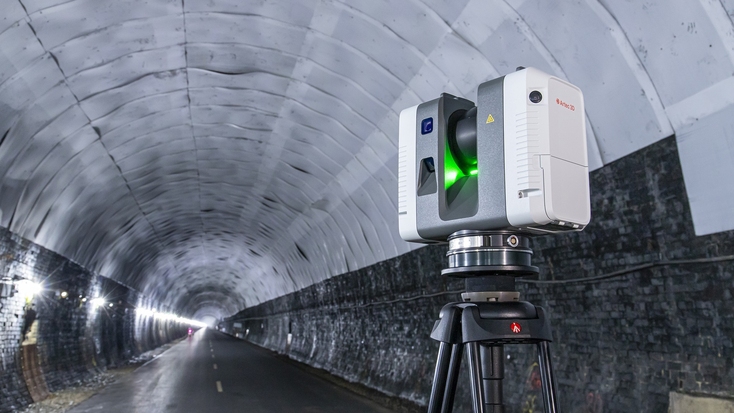
激光3D扫描的未来
展望未来,3D激光扫描技术将在工程、建筑、制造和保护等领域引发变革。塑造这项技术未来发展的一个关键趋势是人工智能和机器学习的融合,它们可以自动化处理点云等复杂任务,从而减少人工输入并提高效率。人工智能算法能够实现实时质量控制,识别设计模型与扫描结构之间的差异,而机器学习则可以预测现有建筑的磨损情况。此外,现代3D扫描设备的易用性和便携性使得数据采集在采矿和建筑等行业更为普及,即使是小型企业也能轻松使用。
3D激光扫描的未来发展还包括与增强现实(AR)和虚拟现实(VR)的深度融合,这意味着专业人士可以以沉浸式的方式与3D模型互动,从而提升设计可视化和整体决策过程。数据采集和处理速度不断加快,使得3D扫描在快节奏项目中变得更加高效。传感器和软件的改进推动了扫描精度的提升,使航空航天和建筑等行业能够实现更严格的公差要求,减少浪费。总体而言,未来几年,3D激光扫描将变得更加智能、快速、功能多样,推动数据采集质量和应用范围达到全新水平。
继续阅读
更多信息请访问
学习中心
选购扫描仪时最重要的是选对分辨率。此外,准确度也很重要,它决定了虚拟作品与现实中物体的差异。
三维扫描的成本多高,受到诸多因素的影响。本指南将聊一聊这些影响因素,便于您决定是入手一台扫描仪自用,还是寻求专业扫描服务。
为真正了解世上最优秀的三维扫描仪如何采集各种尺寸和难度的物体,我们必须先深入了解结构光工作原理。本文旨在深入浅出地向您阐释结构光相较于其他技术的优势,包括三坐标测量机、CGI摄影测量法。随后,我们将介绍对于结构光三维扫描仪而言,难度较大的表面可能有哪些特征。




